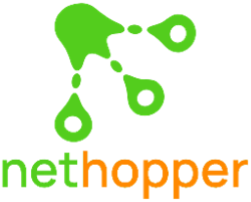Part 3: Increase Workforce Productivity with Unified Generative AI Search
- Claire C.
- May 30
- 3 min read
Updated: Aug 8
Why Private, Secure AI Matters for Your Business
By Chris Munford, CEO & Founder, Nethopper
In Part 1, we discussed the hidden costs of wasted time. In Part 2, we addressed the need for a unified generative AI search capability to enhance employee's productivity. In this blog, I'll address the need for private, secure AI.
Why Enterprises Need Private, Secure AI
OK, so let’s assume that Gen AI can help workers and improve their productivity.
Which GenAI system should your company use?
Public AI works great, but it doesn’t have the necessary business (SaaS) data to help. Each of your SaaS tools is coming out with “AI-enabled” support, but each only has access to one SaaS’s data and can’t get 360-degree insights.
You could give all your data to public Gen AI providers like ChatGPT or Grok, but how? And what will they do with that data?
Some of this data is proprietary or even regulated, and can’t be shared with a third party like ChatGPT.com.
The best security promise that most public AI providers can offer is, “We won’t train our model with your data.” But is that good enough?
Are you even allowed to share your data with them? There are serious data privacy risks with public GenAI tools. Instead of giving your data to public AI, what if you could bring the AI to your data, within your company’s secure environment? Then you don’t need to send your data anywhere. This approach is called “Private Enterprise AI,” and it can meet your data compliance and governance regulations, as well as internal policies.
Private Enterprise AI can access all of your workers' individual SaaS data sources and provide AI insights without ever leaving your IT walled garden.
This would pass even the most difficult security review or audit.
Getting Started with Unified GenAI Search
To get started with Unified GenAI search at work, do your research on companies that offer products and services. However, not all are created equally.
You should look for the following capabilities:
Data Integrations
Make sure they work for you (Google Drive, Slack, Jira, Salesforce?).
AI Models & Choice
Ability to switch between models that work for you and your users.
User-specific access controls
Follows the auth rules for each user in your company.
Scalability
How will it perform if everyone uses it at once?
Price
Fixed or variable? For example, do you have to do ‘token’ math and risk a billing surprise?
Also, watch out for those that are “just a wrapper” for public AI services, because they use APIs to access AI, and your data remains at risk (even if they promise to ‘not use your data to train models’).
Instead, look for offerings that will set up a single-tenant Gen AI system that only your company can access, running on your domain or VPN.
Final Thoughts
Unified Gen AI Search can dramatically improve workforce productivity—by 10-20%, and that number will only grow as AI gets better.
Remember that earlier example—in Part 1—about the hidden cost of wasted time? In that scenario, searching is costing that business over $5 million per year, just because people can’t find what they need.
Now, imagine if the company could cut that cost by 20%. That’s about $1.1 million saved every year with Unified Gen AI Search!
That’s a million dollars you’re not throwing away on wasted time. Think about what your company could do with that kind of extra cash (and all the time your team gets back, too)!
This is the most practical application of AI in the workplace, and most companies will eventually do this. Ask yourself: how much time and money will this save your company? Or your competitor’s company? Can your company afford not to do this?

If you decide to evaluate Unified Generative AI solutions, or want to know how much it can save, book your free demo now or email us: info@nethopper.io.
We’d love to talk with you.




